A movie poster is used to promote and market a film to get people in a theater to view it. For different domestic and international markets, studios frequently print many posters of different sizes and content. They usually include an image as well as text. Drawings were significantly more common than photography before the 1980s. The film title is usually in big letters on posters, as are the names of the main cast.
Poster templates can be found inside and outside movie theaters, on the street, and in stores. The same pictures may be used on websites, DVD packages, flyers, newspapers and magazines, and other press associated with the film’s promotion.
Free Downloads
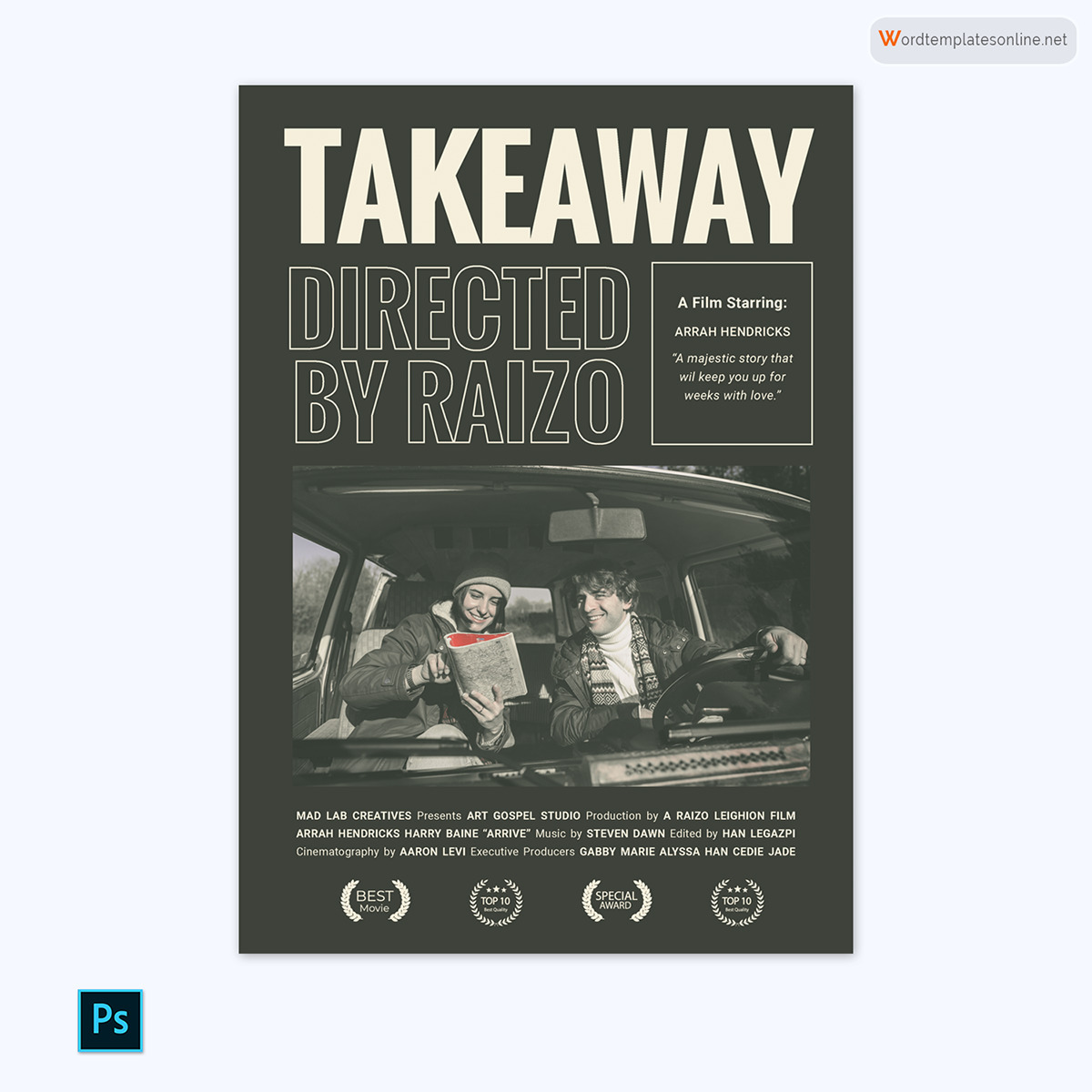
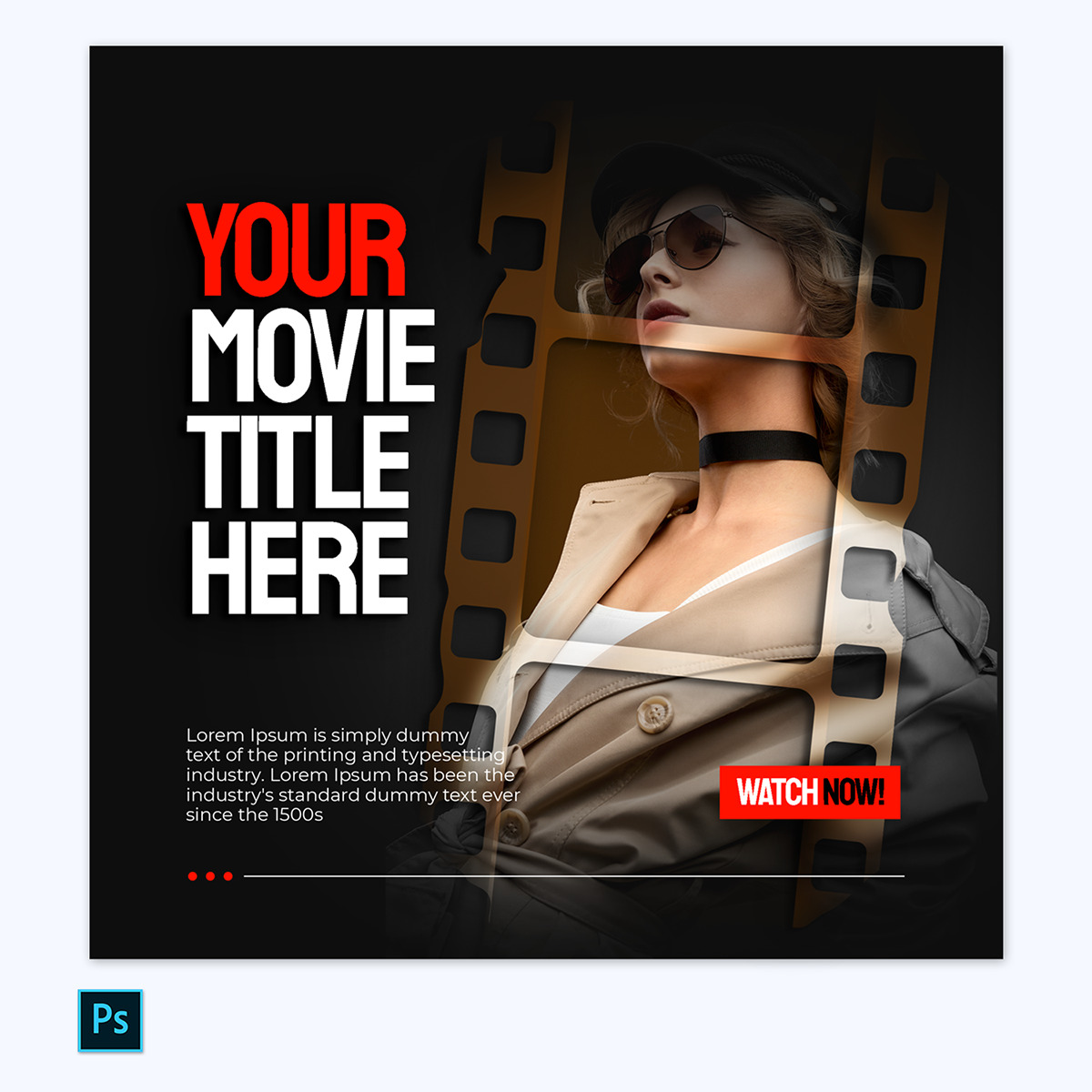
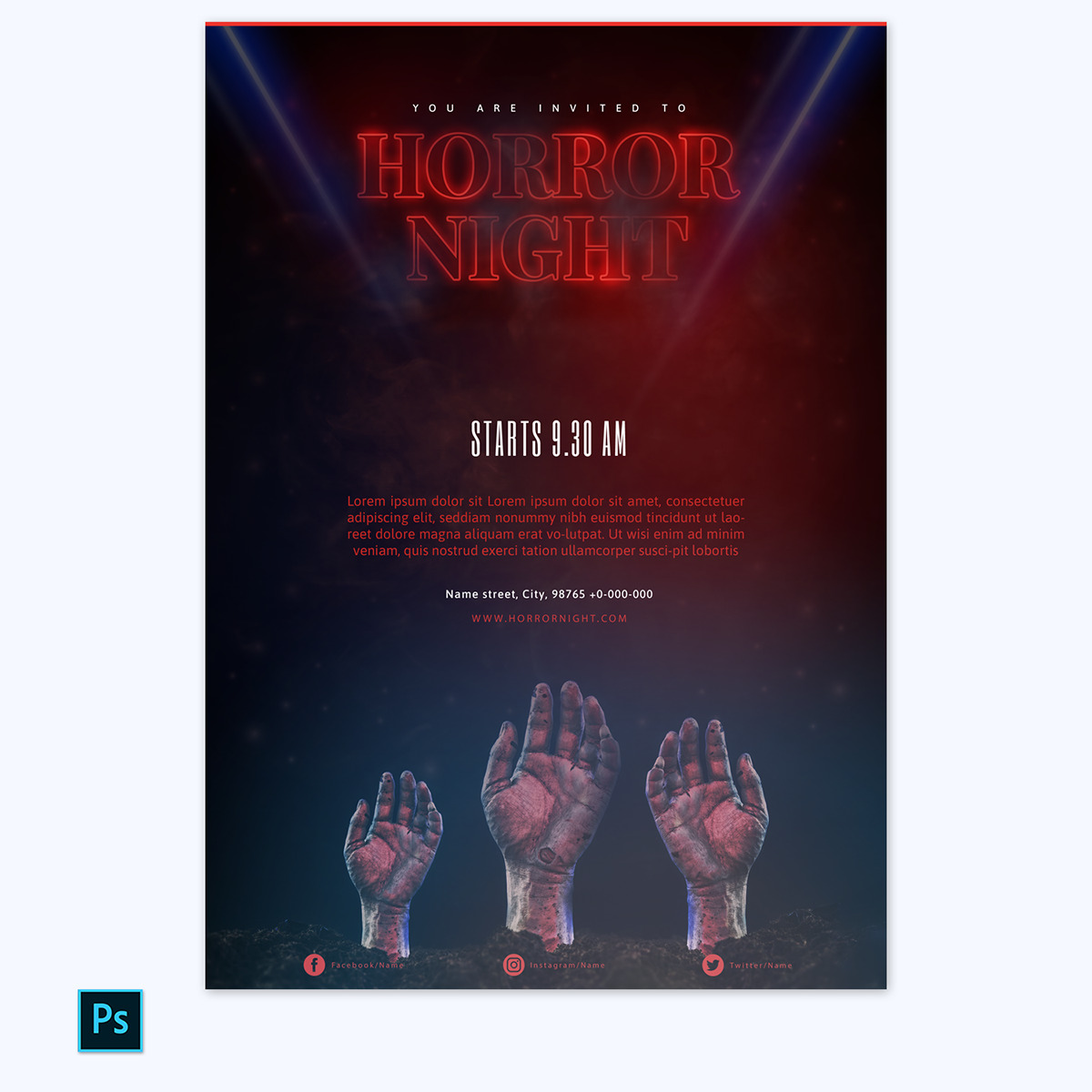
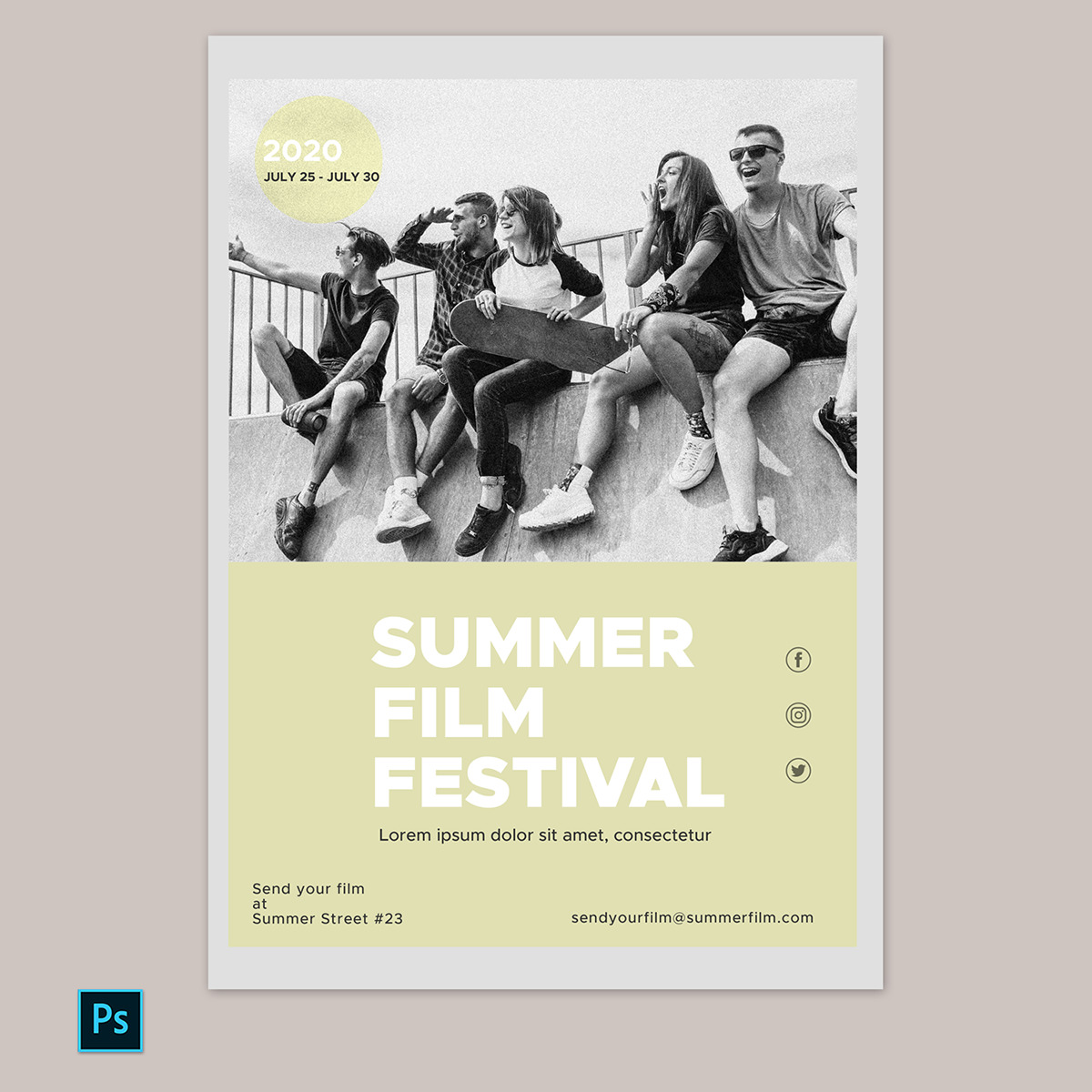
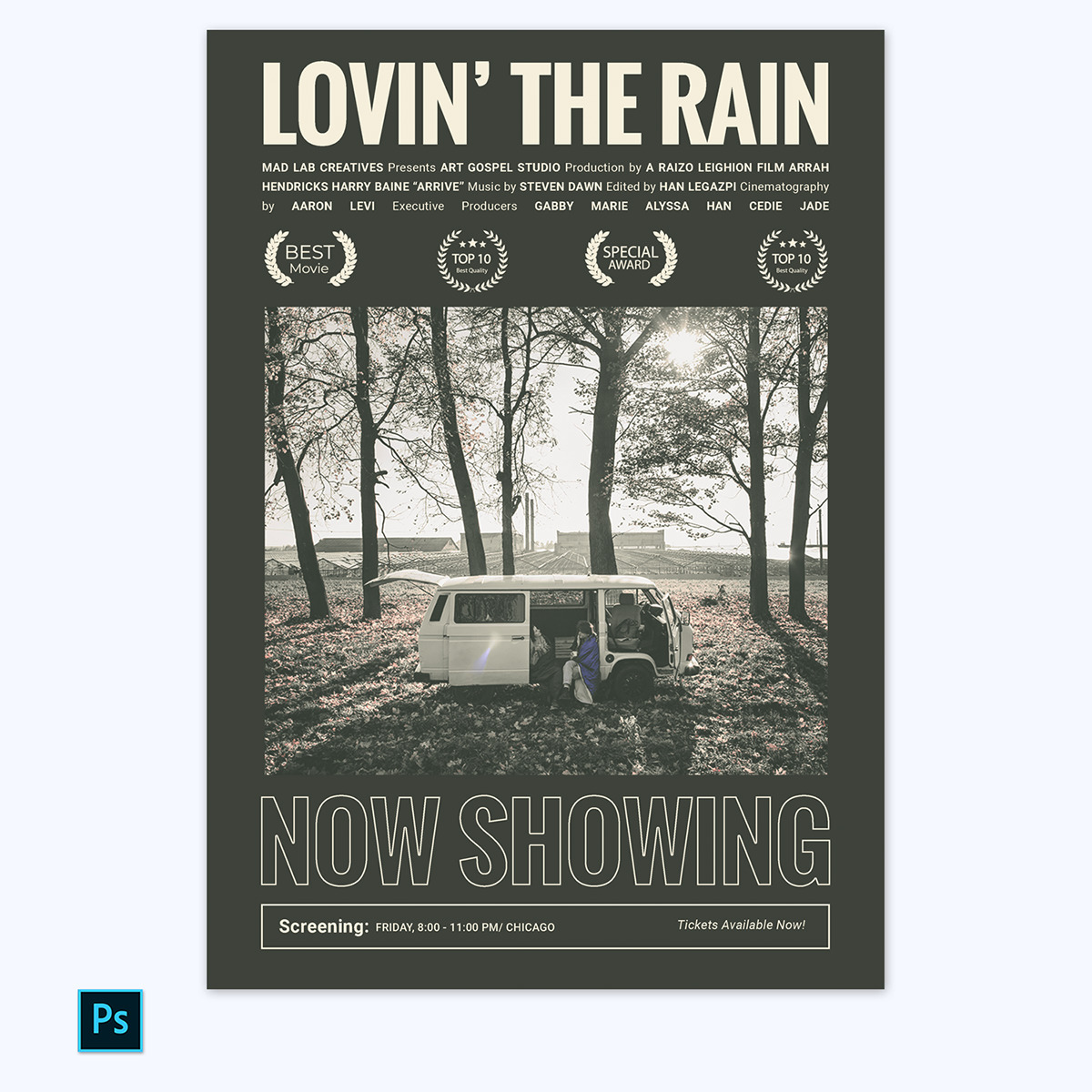
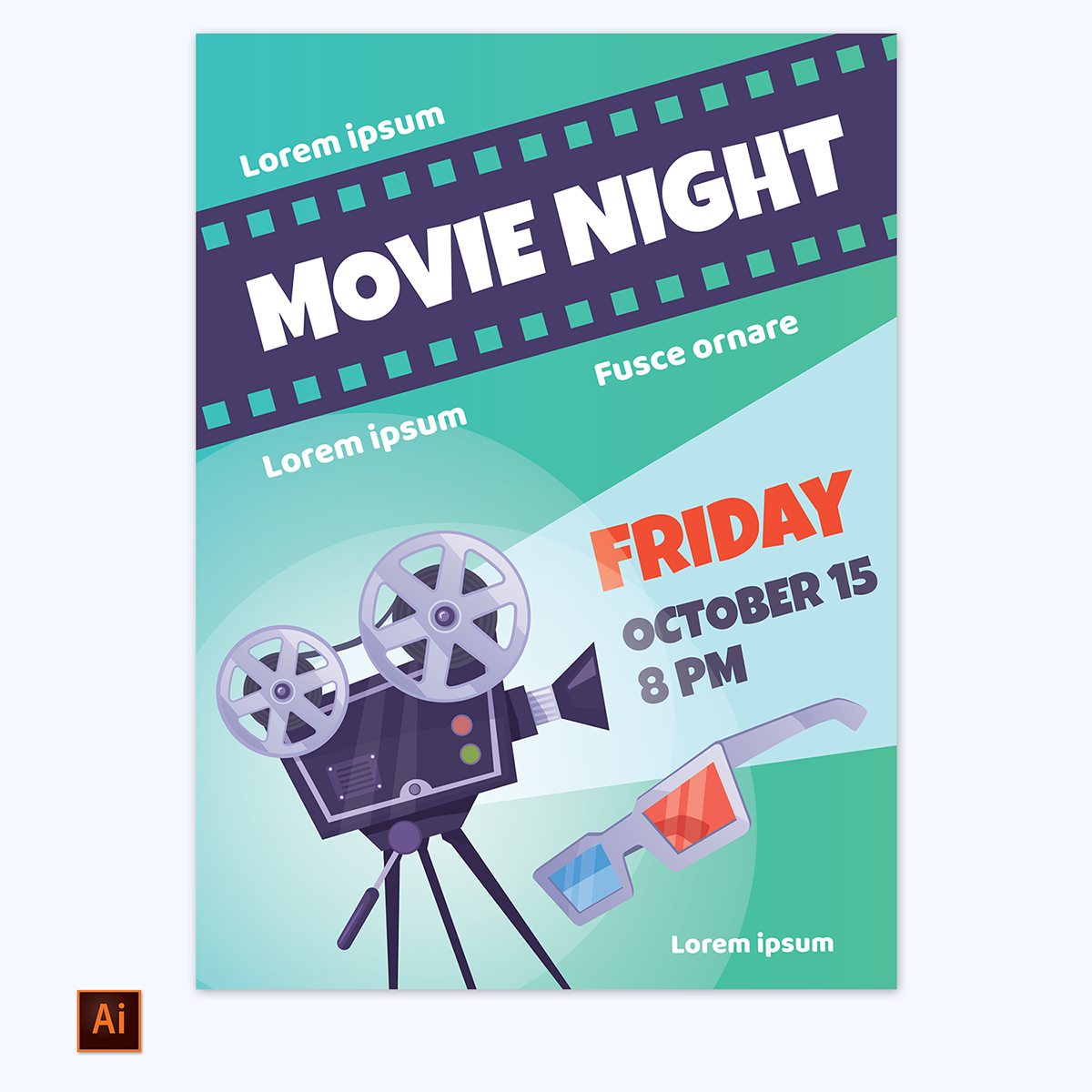

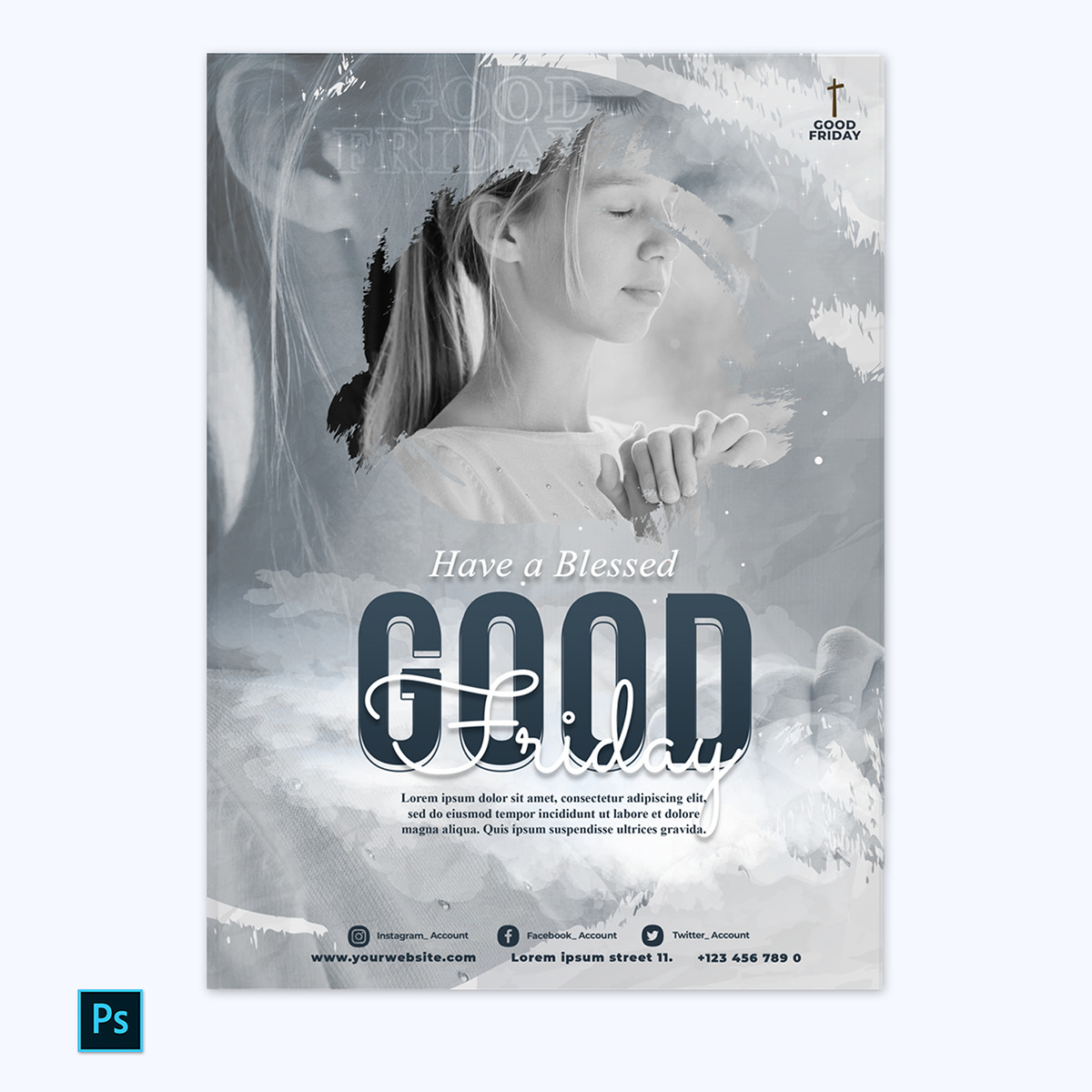
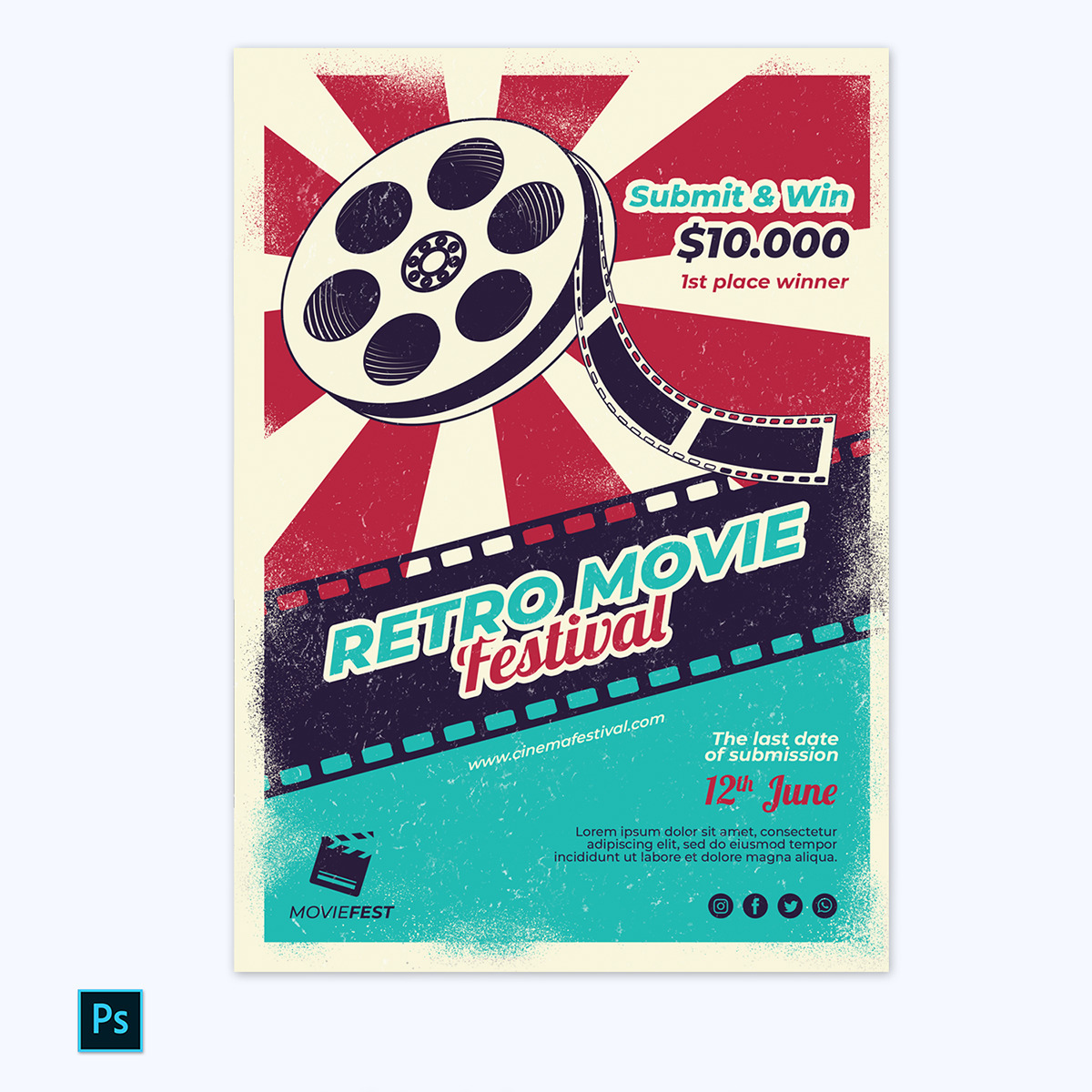
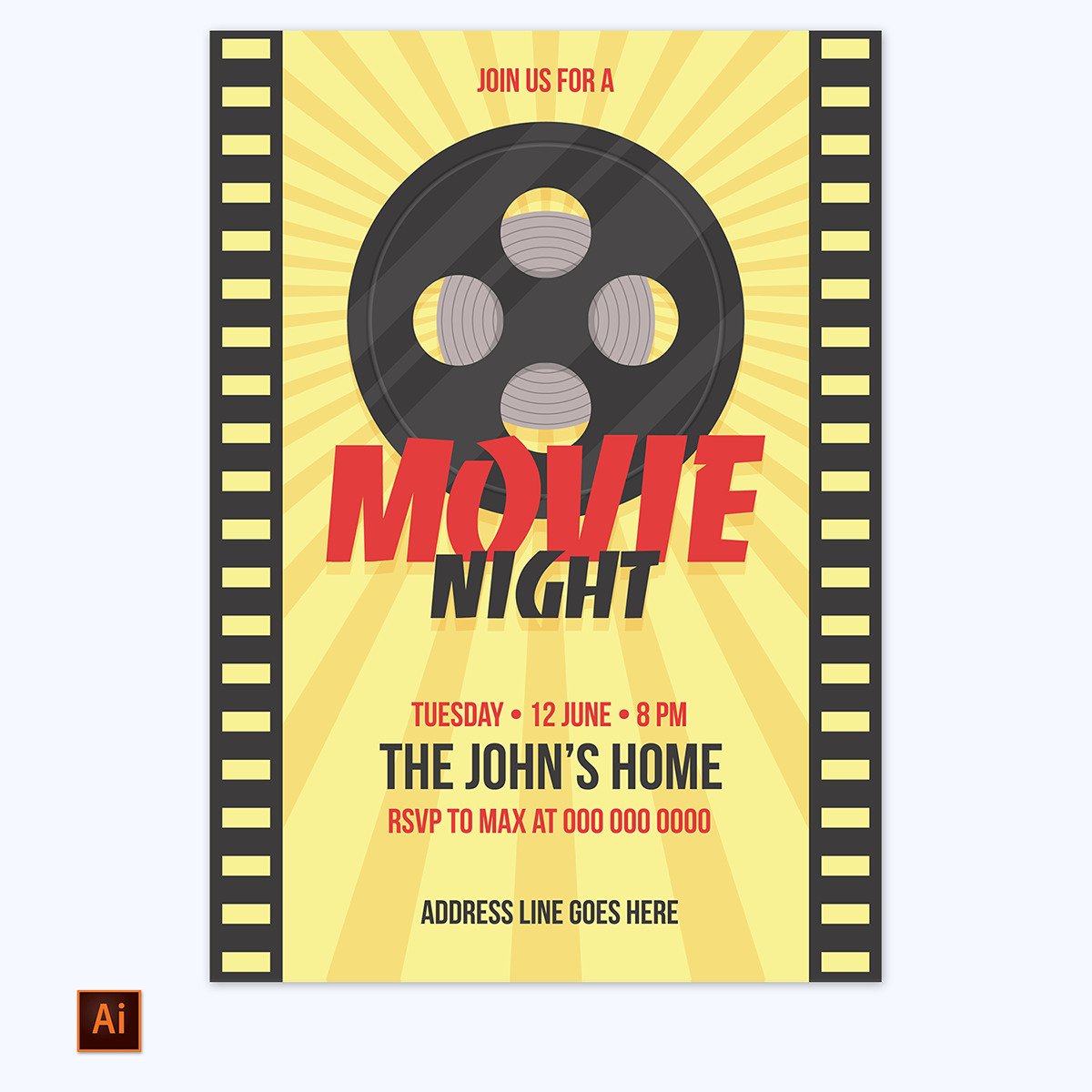

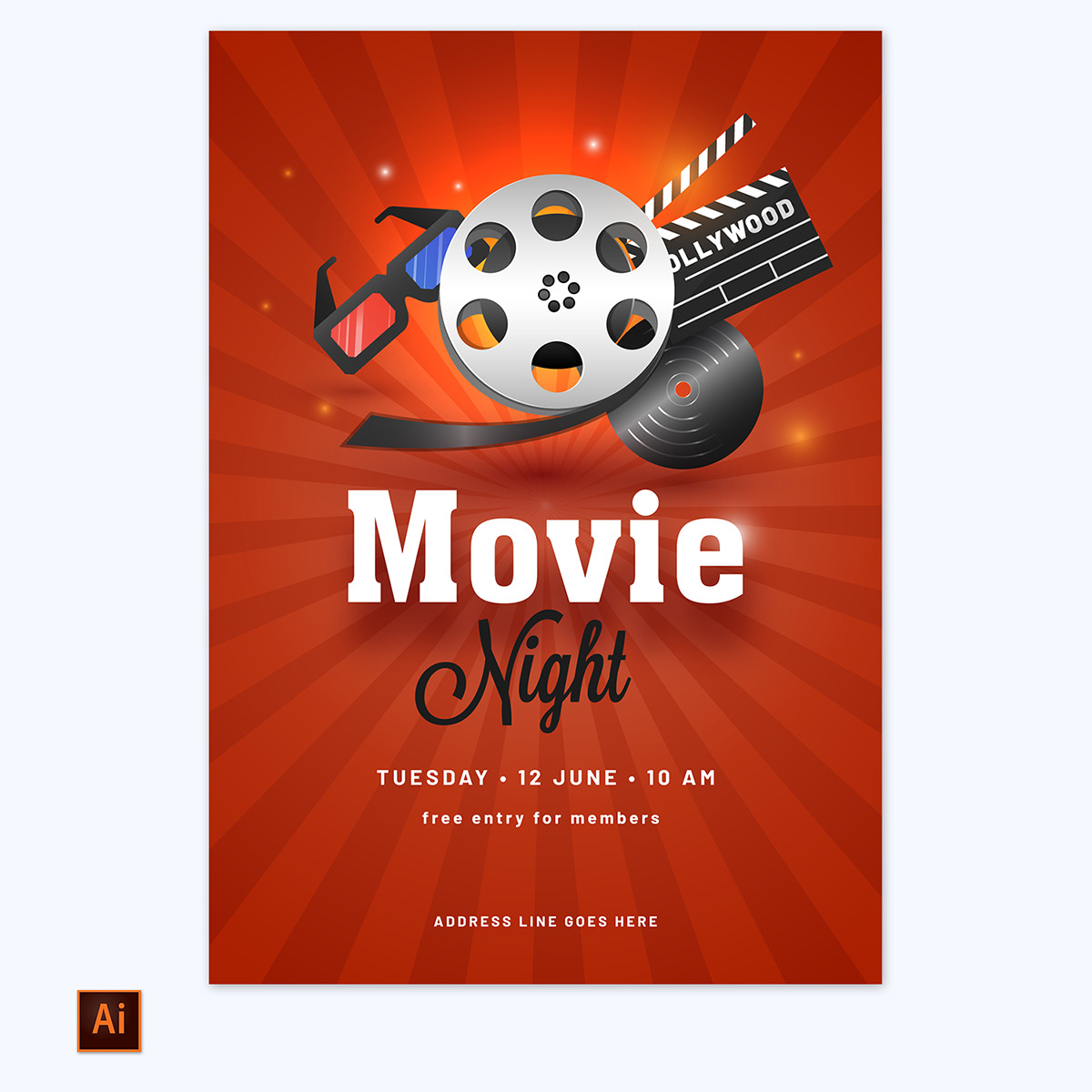
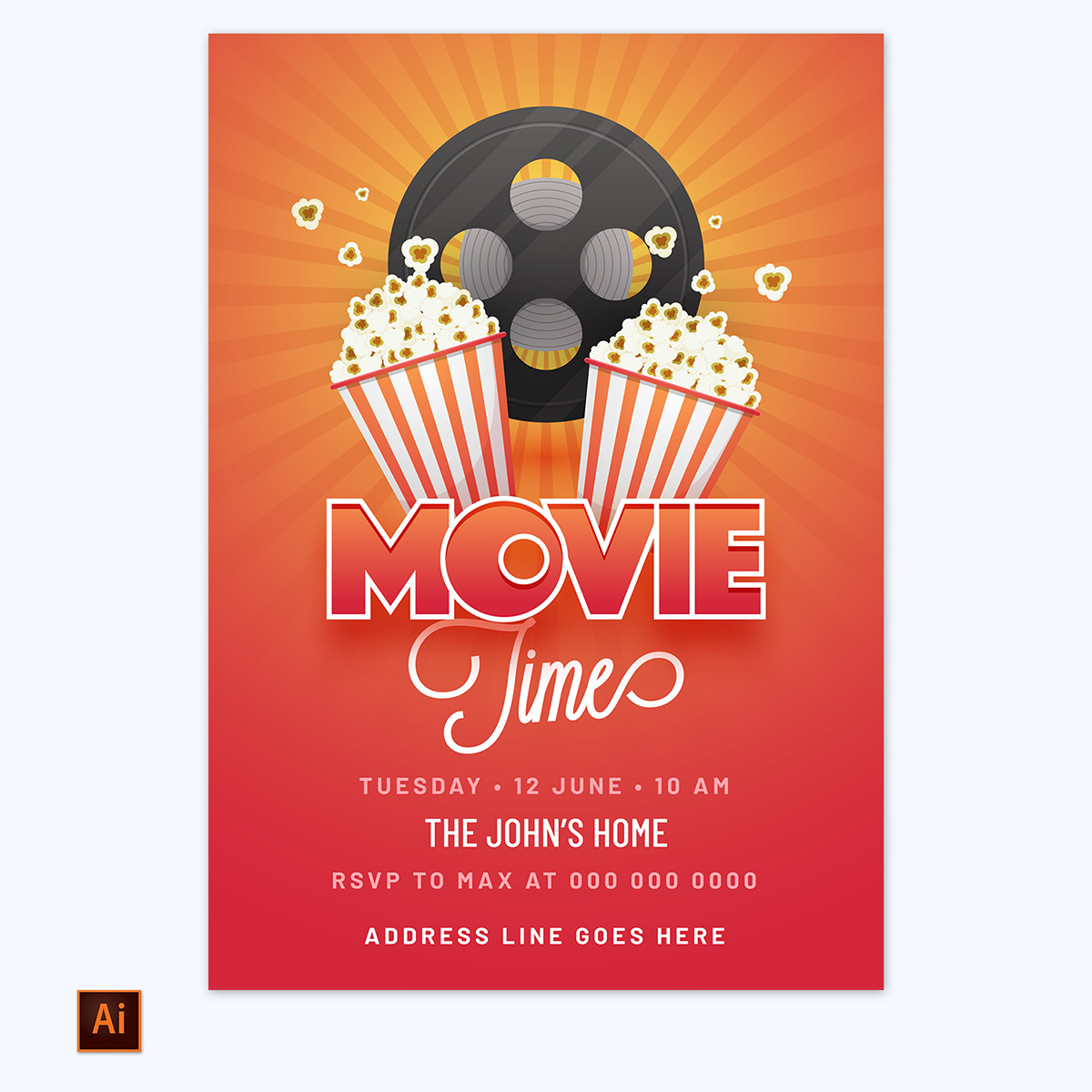

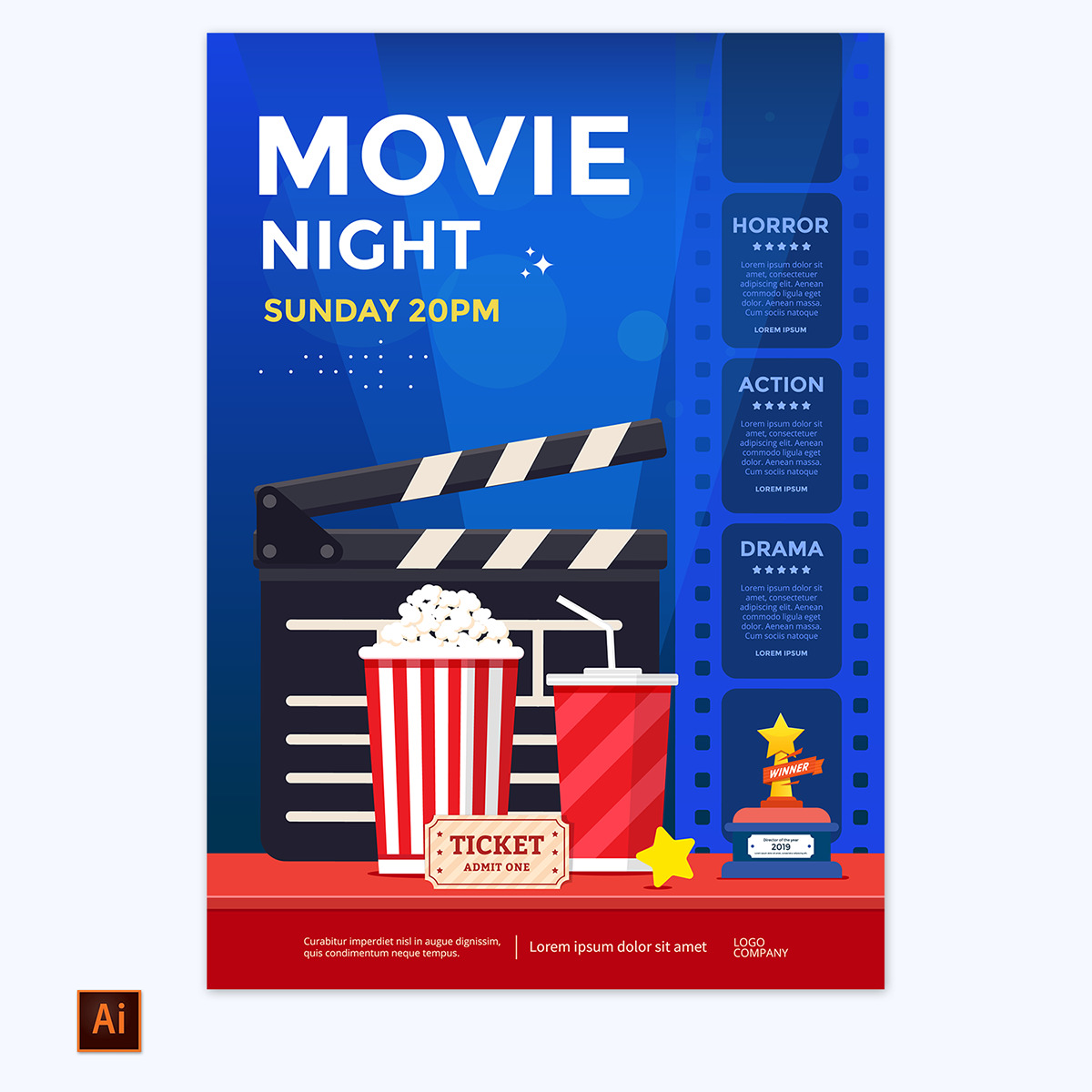
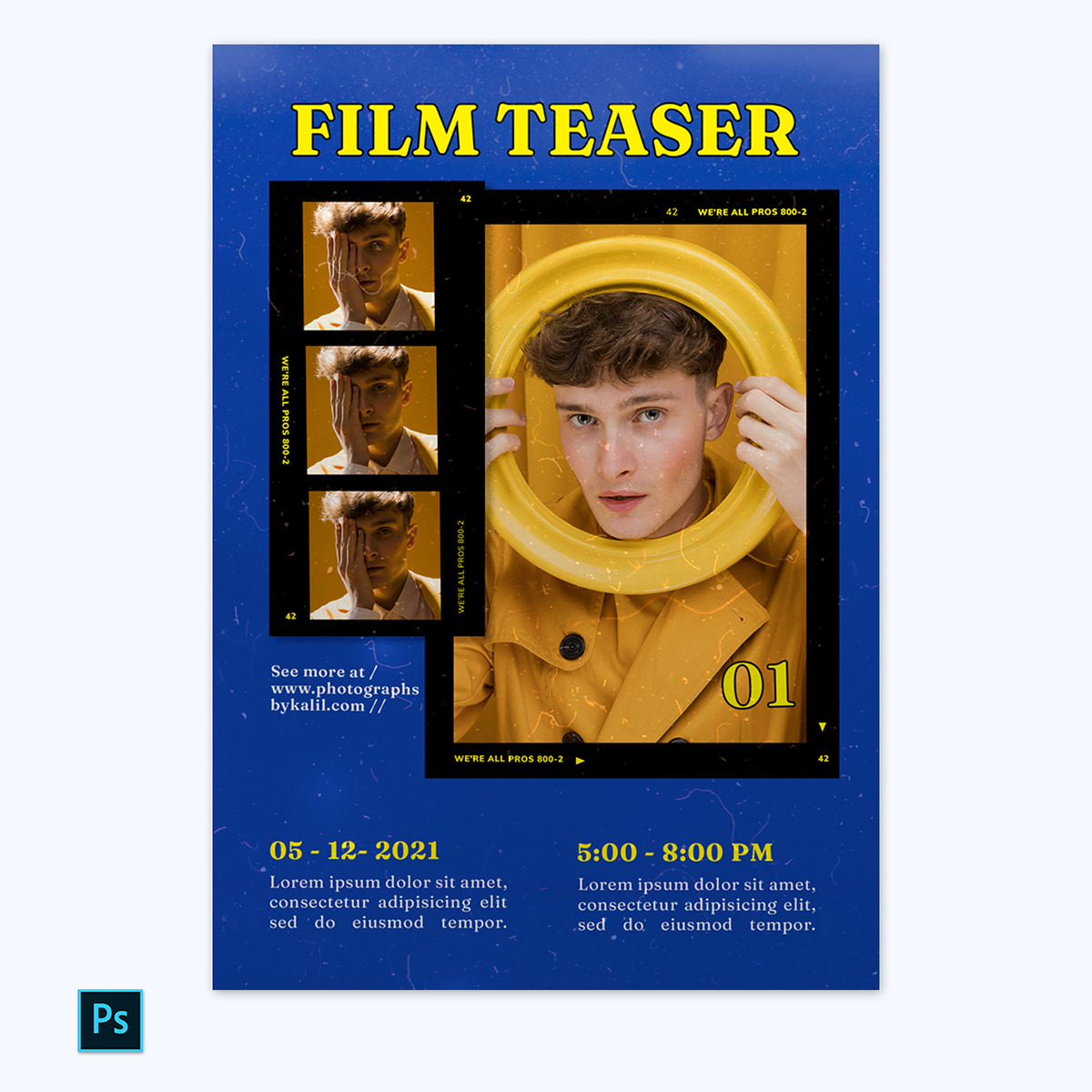
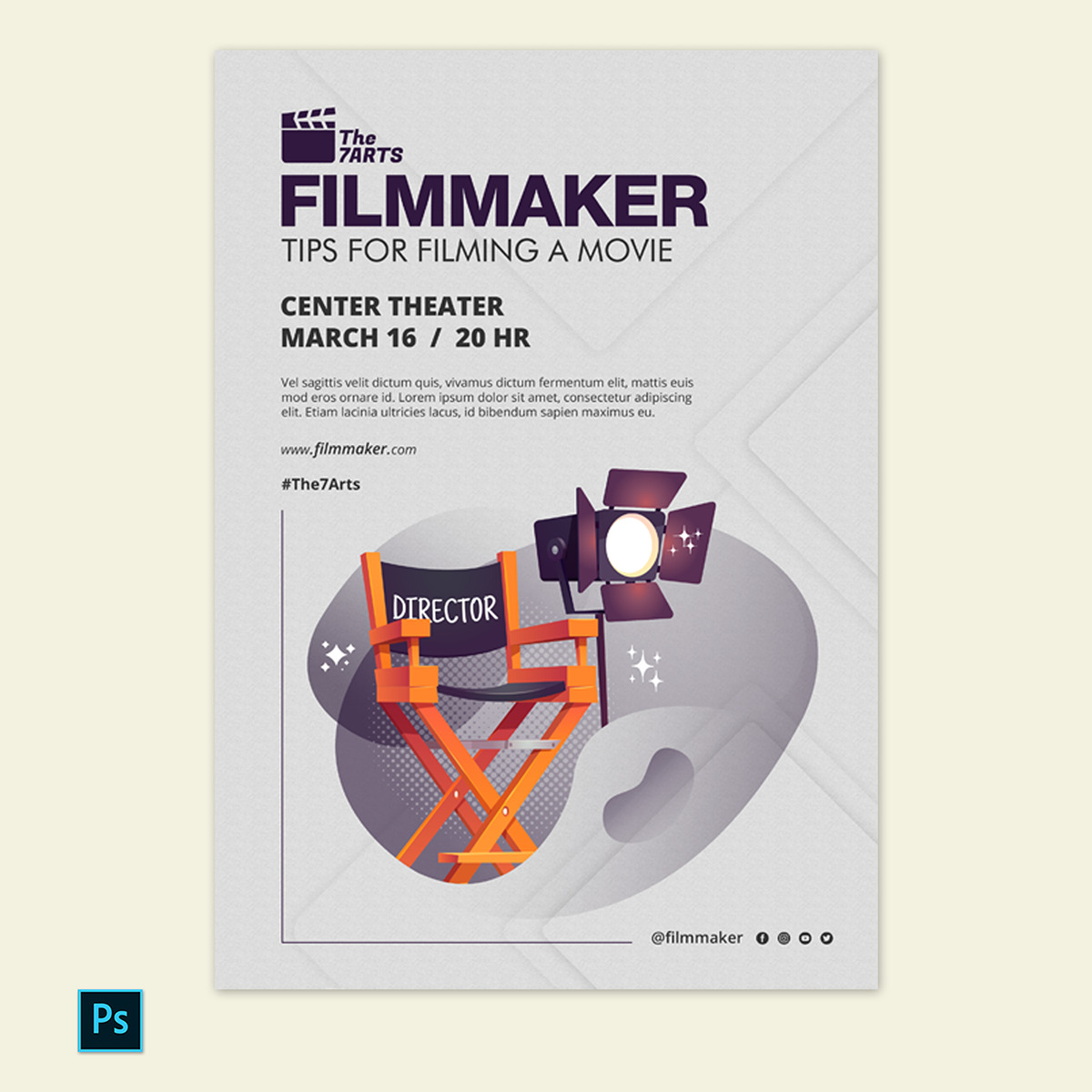
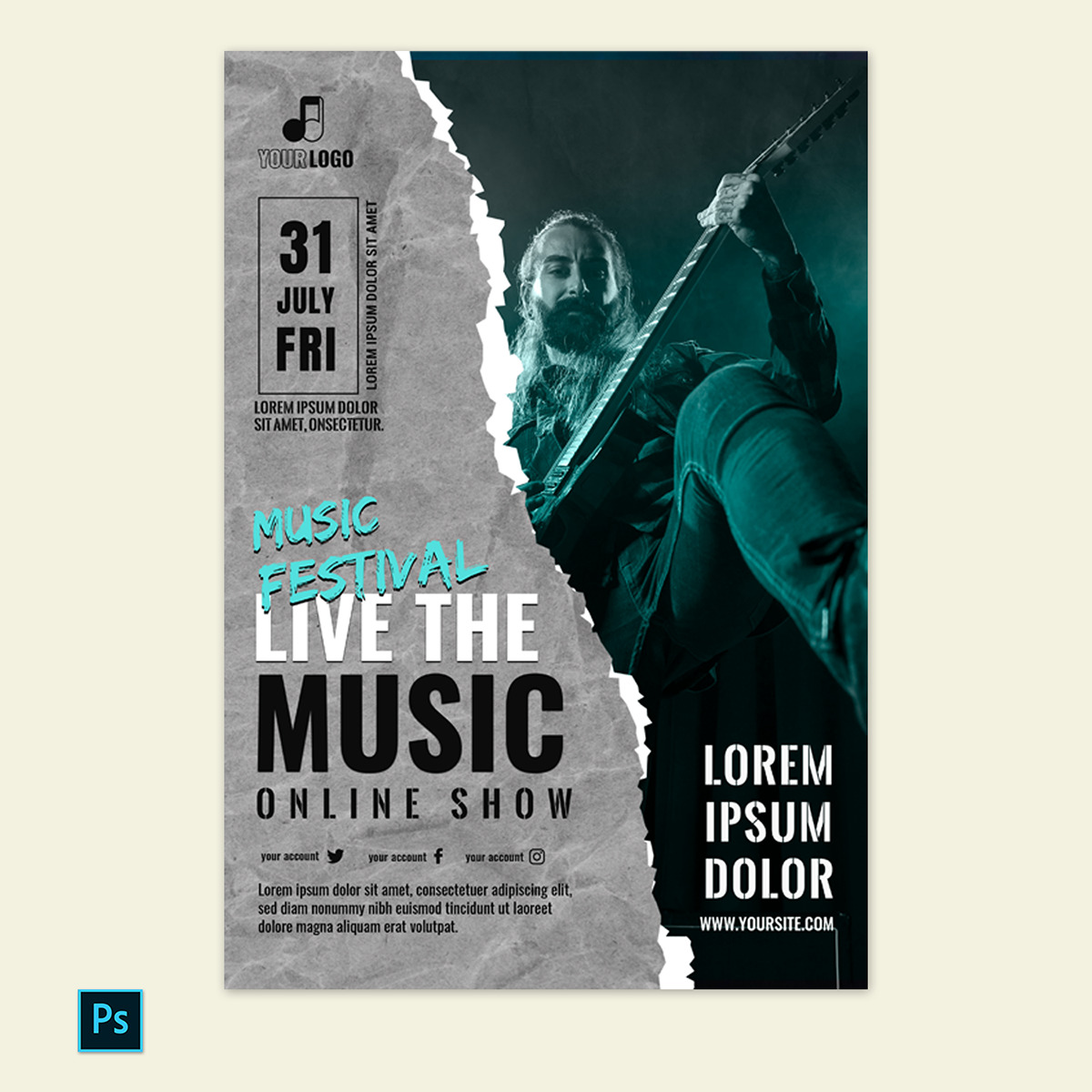

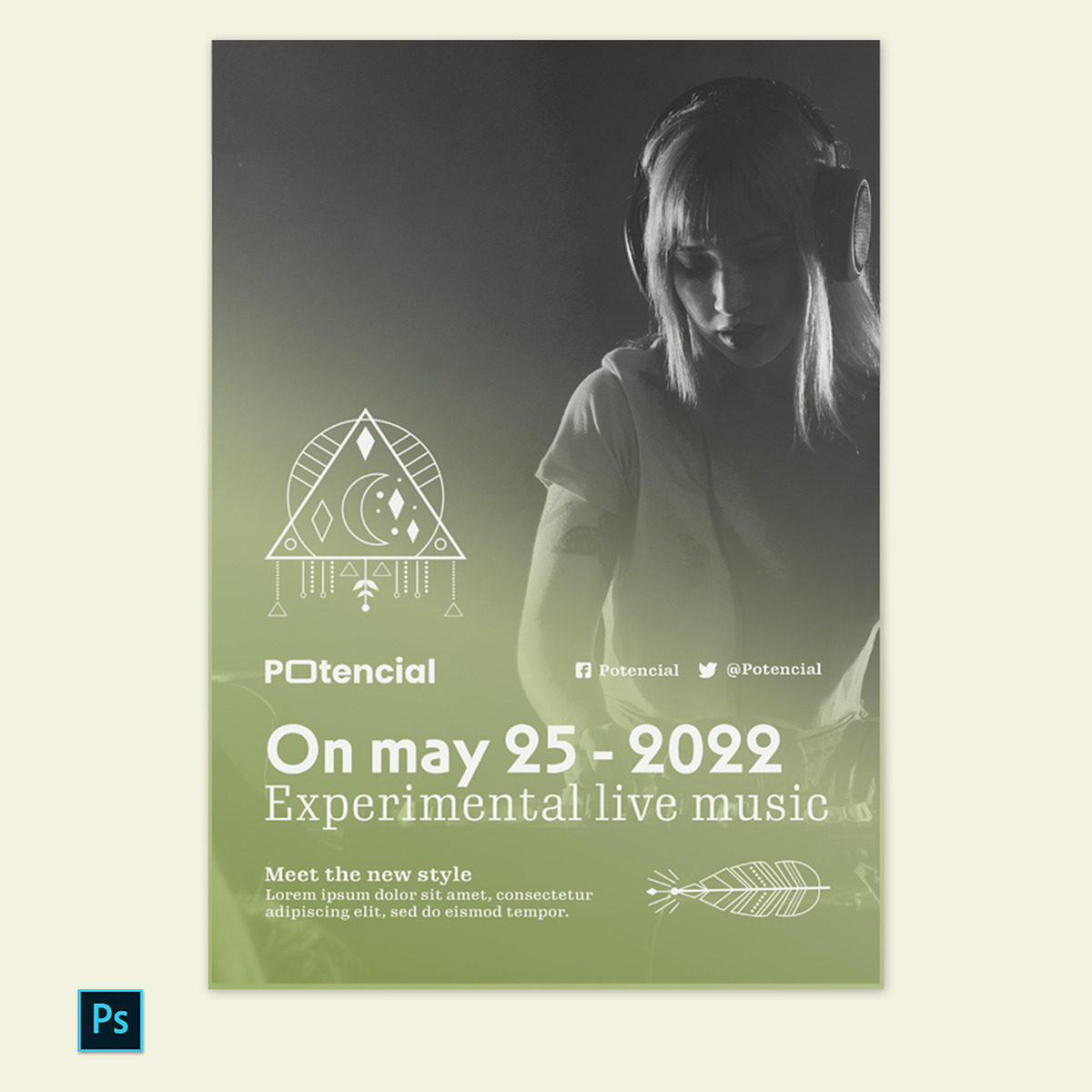
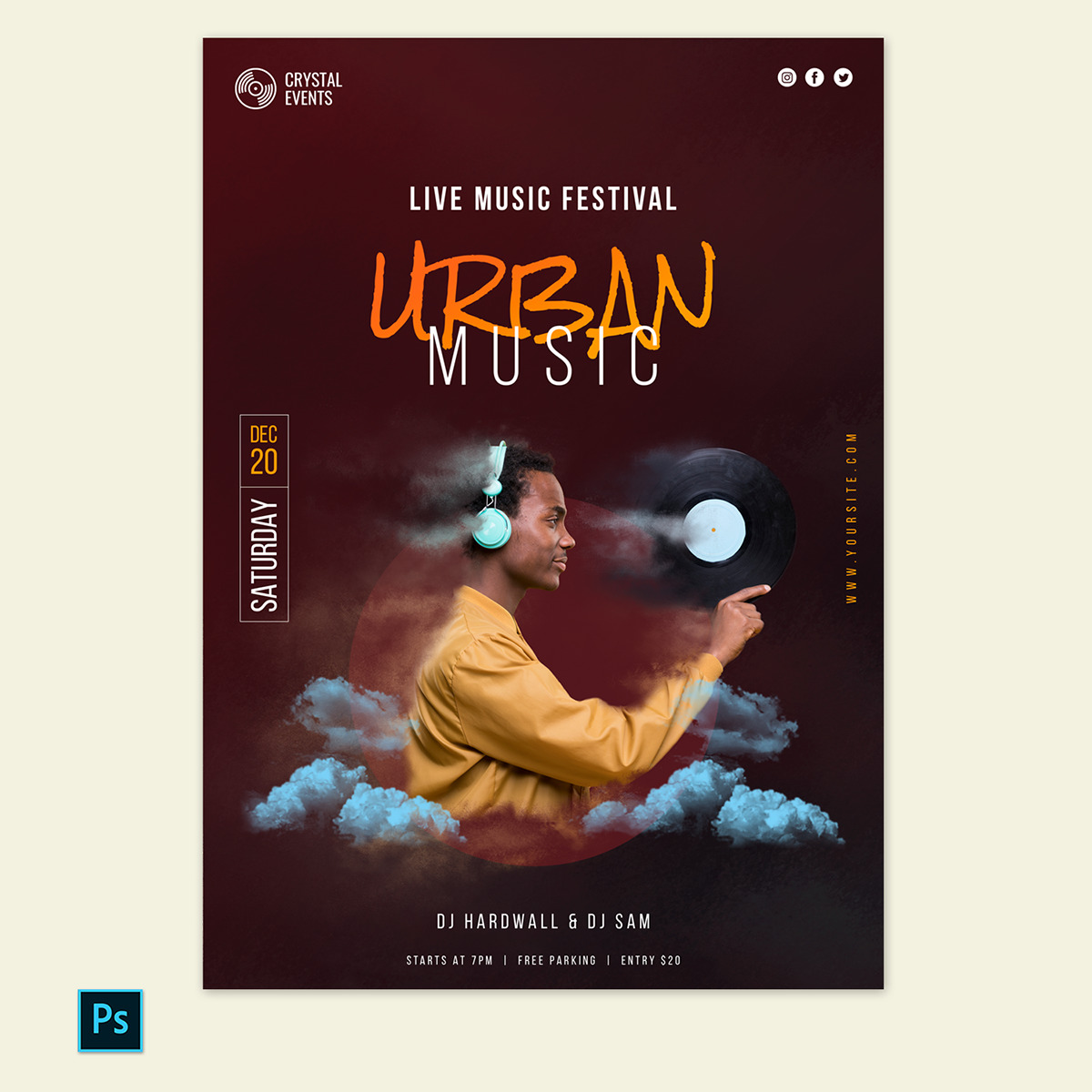
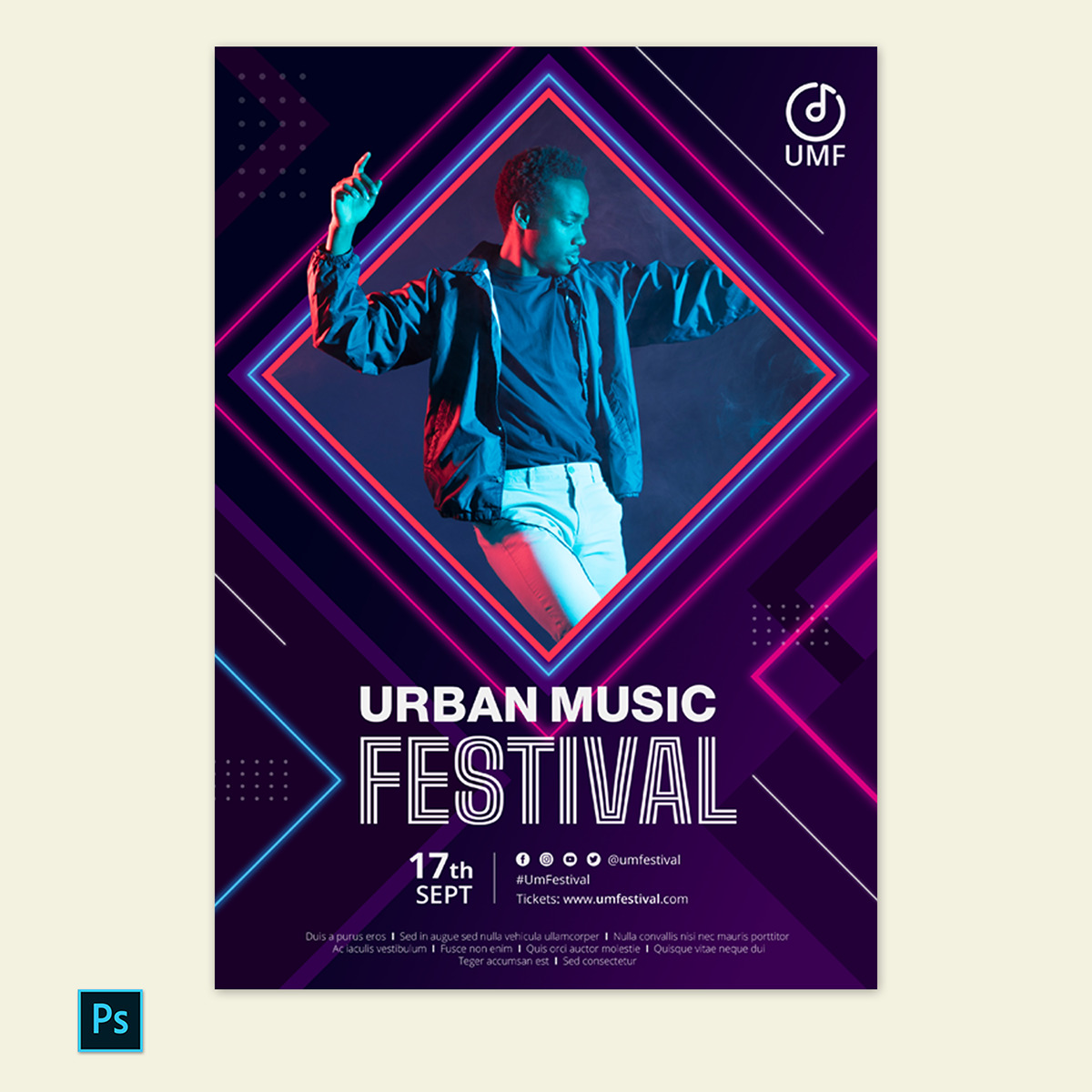

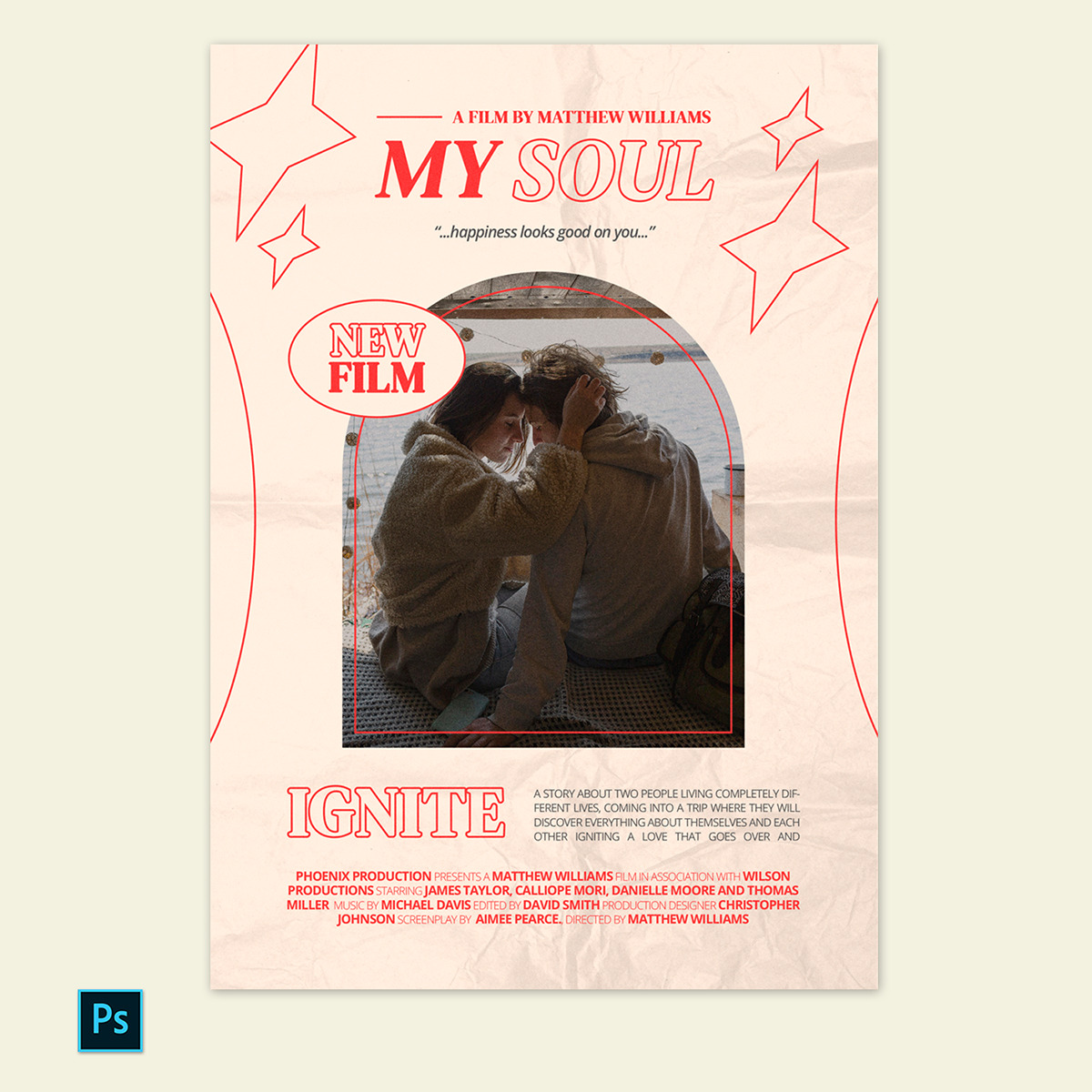
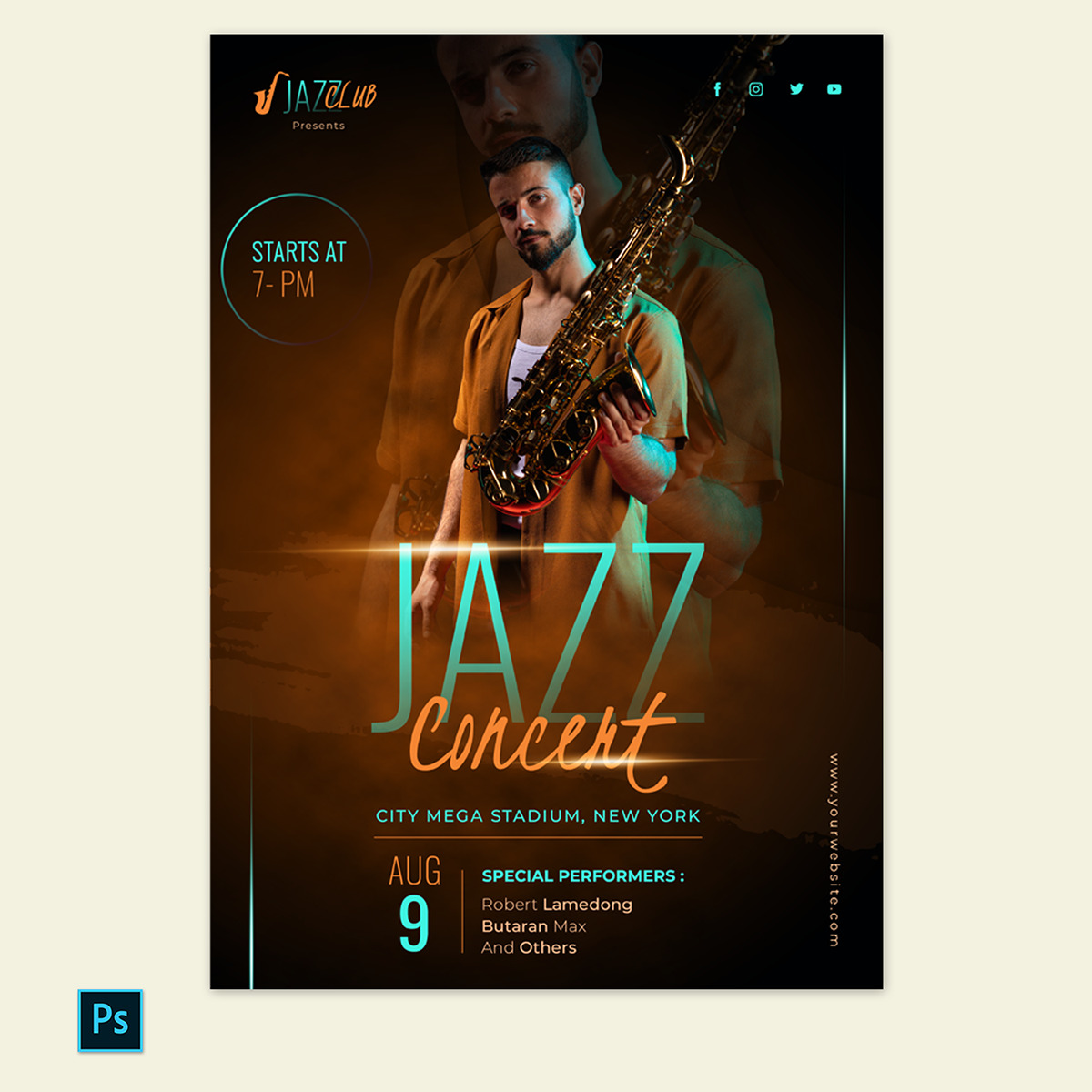
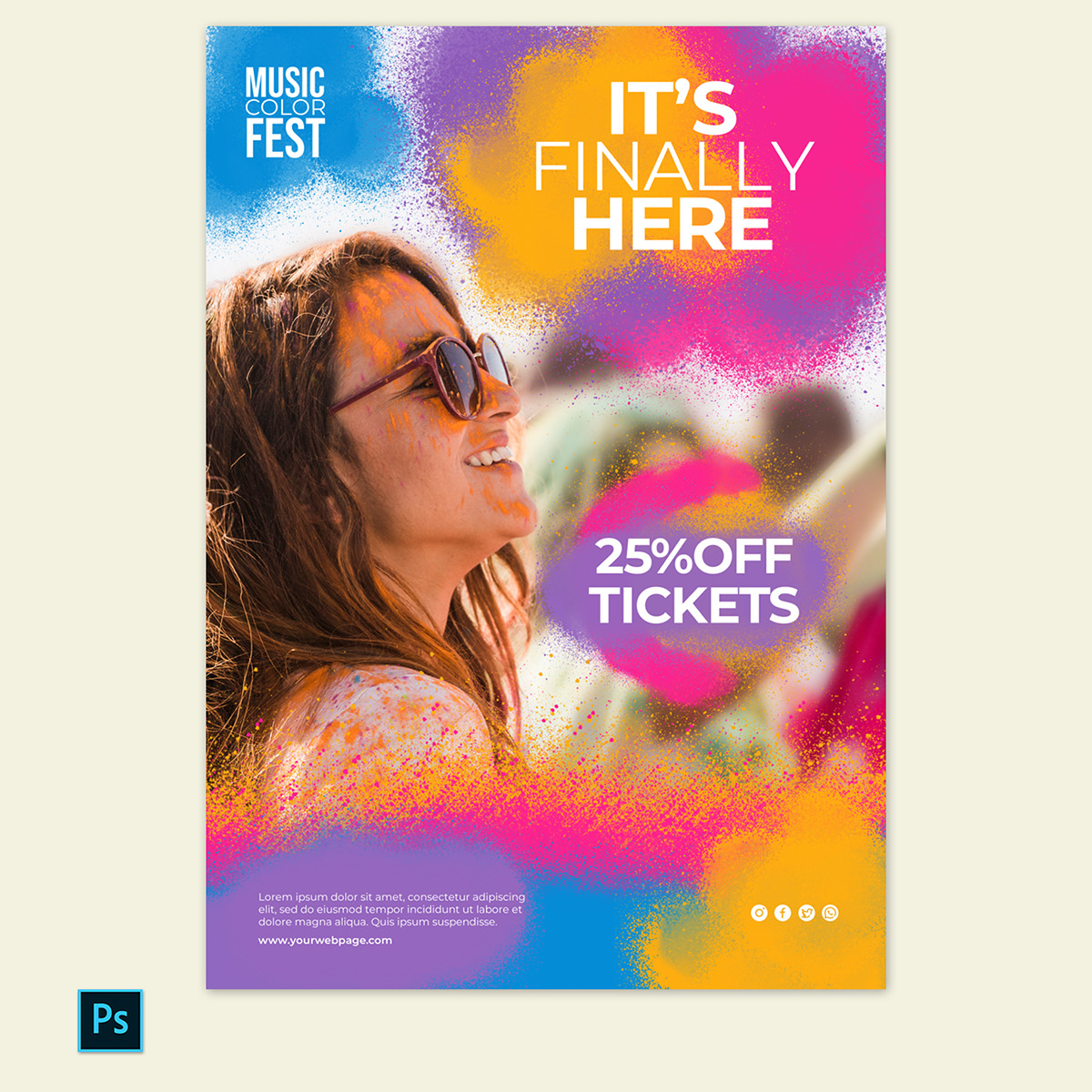
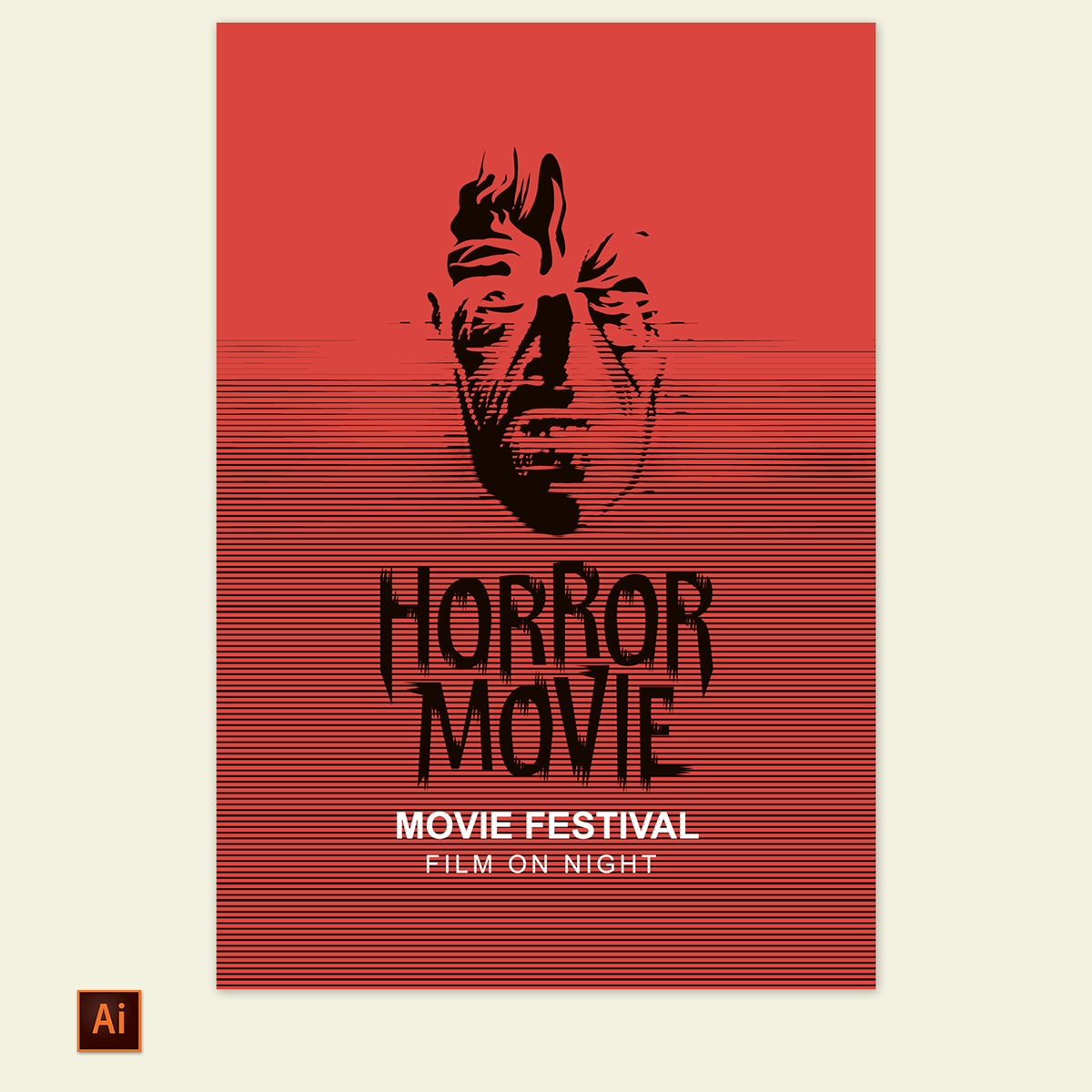
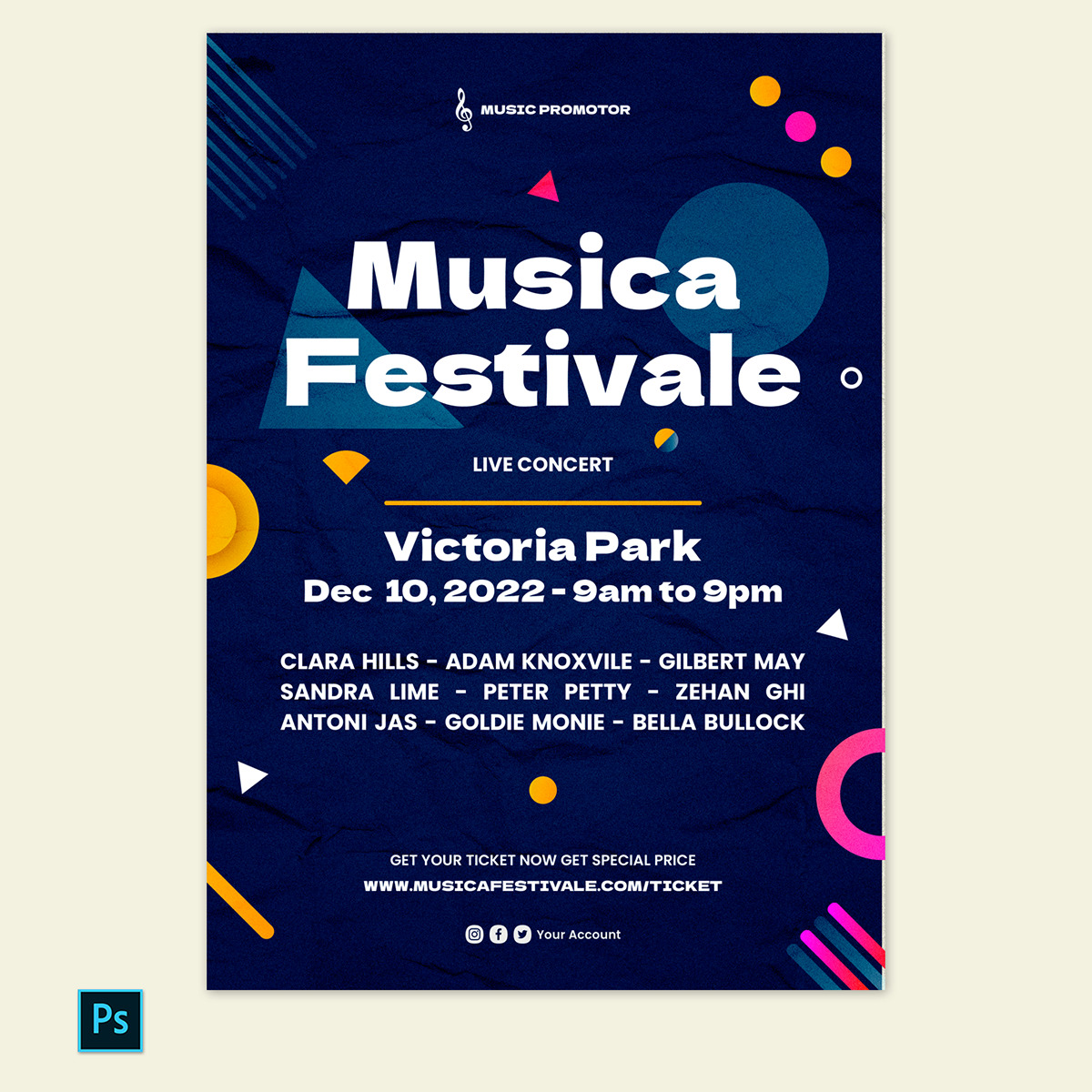
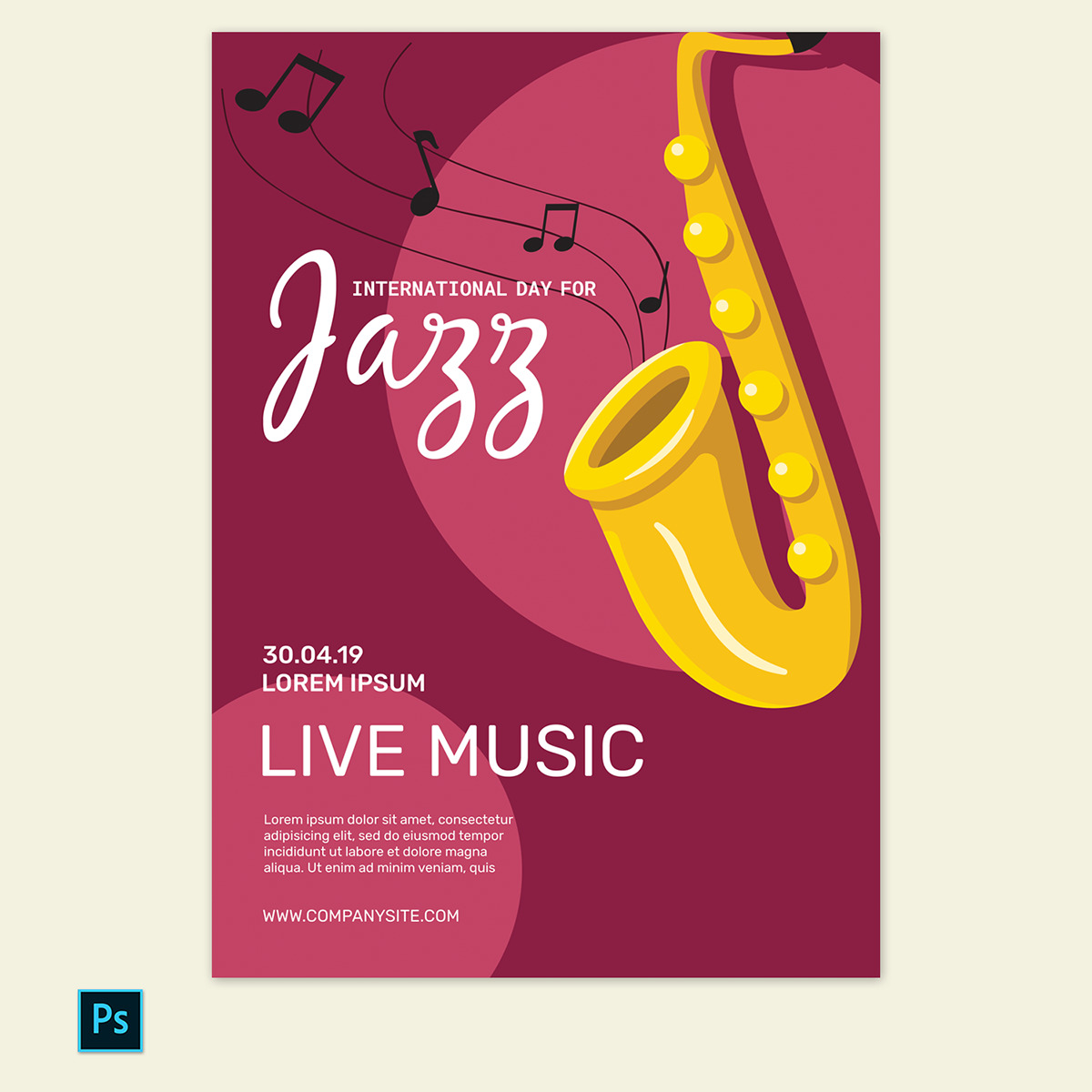
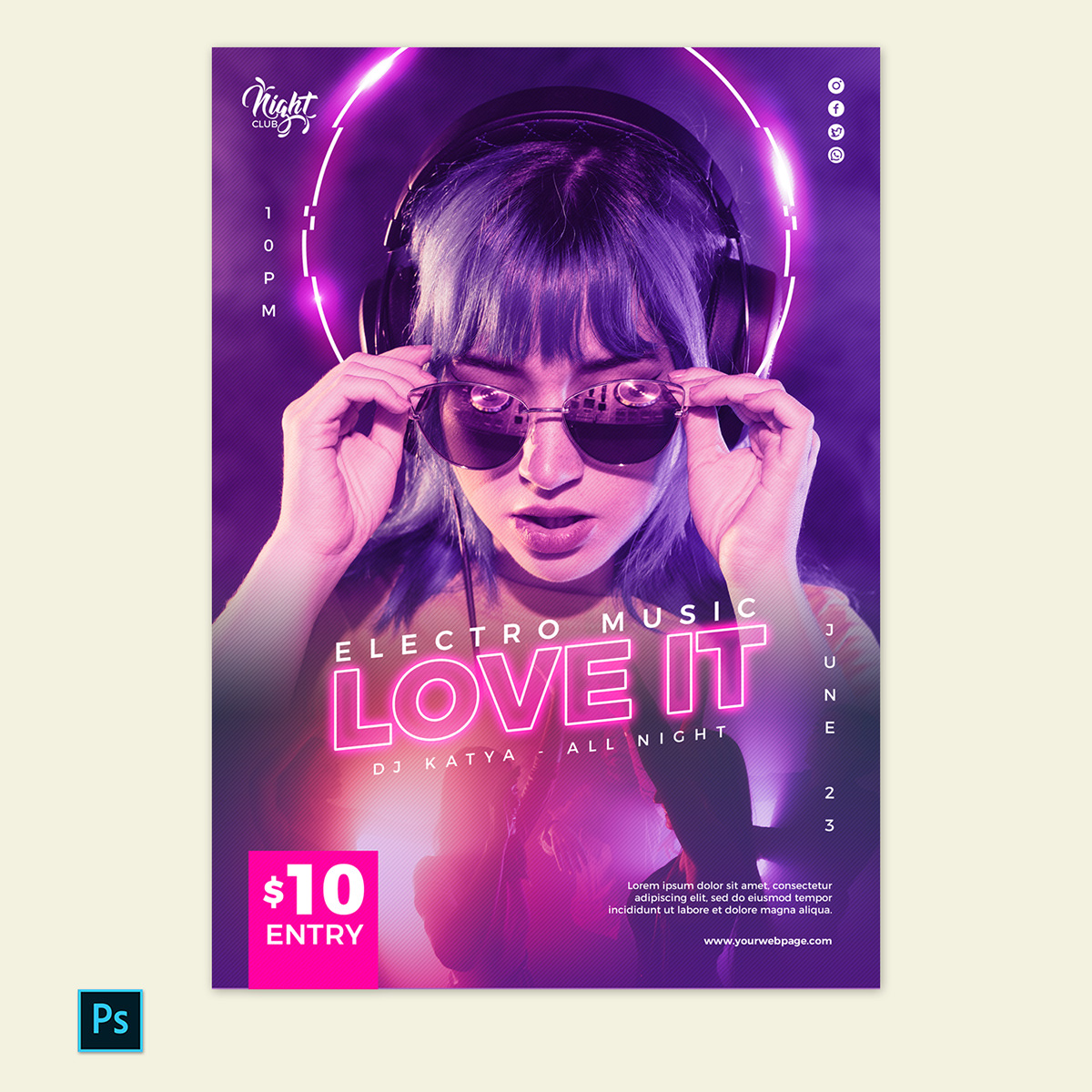
Purpose of a Poster
A movie poster contains a lot of information about an upcoming movie, including the title, release date, the cast of actors and actresses, and other details. It also serves other purposes including:
- Its objective is to promote an upcoming film.
- It tells people that a new movie is about to be released, as well as the day on which it will be screened.
- When a person sees a poster for a movie they like, they will share the word with others, creating public excitement.
- Also, its imagery and graphics can represent a specific theme and storyline that the movie will follow, giving people an idea of what the movie may be about and therefore helping them decide if they want to see it or not.
- It also describes the type of the movie, what makes the movie different from others and why people need to watch it.
Conventions of a Poster
Conventions of a movie poster are generally how they are made to look attractive and achieve the main objective of getting people’s attention. Below are the conventions:
- It must be visually appealing and compelling to the audience.
- There must be an image to capture the audience’s attention, and the title is shown in a vast, eye-catching font.
- It should be created to appeal to the broadest possible audience.
- At the bottom, there is often a logo and information on the director and production company showing whether the movie will be a horror or a thriller and the release date.
- There may be reviews or titles of previous films that the studio has produced.
- The movie’s motto begins with a rhetorical question, inviting immediate questions from the viewers, such as what the movie is about.
Types of a Movie Poster
There are three types. One sheet, teaser, and wild posting. A production company can use one or all of them according to their resources and target market. Below are the three types explained:
One sheet poster
A one-sheet poster is the one that uses the billing block. The one-sheet poster is the most common type. It will often contain a range of information on its theme, depending on the purpose it serves. One sheet posters, which usually include both images and text, are used to introduce a new reader to a particular artist. The artist’s name and the title of the release will be prominently displayed.
Teaser poster
Teaser posters are posters that hide the credits or even the title. The purpose is to make the audience curious by not providing the complete information of a movie waiting to be released.
Wild posting
It is a type of advertising in which a considerable number of static posters are posted in multiple locations, usually in heavily populated areas such as billboards or online banners to draw maximum attention.
What is a Movie Poster Template?
A template is an online tool that allows a person to add personalized content and graphics. In most cases, users use a template to add content as needed. For example, they could either edit the text on the poster or design one from scratch by using templates and uploading their image.
Critical Elements of a Great Template
There are seven essential elements which are discussed below:
Attention
The first and most crucial stage for designers is to get people’s attention to look at the poster. This doesn’t have to be done with explicit images or colorful graphics, though, given how effective they attract attention. Instead, designers can build some narrative by using the movie’s characters or a significant plot element to catch the attention of anyone who views it.
Iconography
The most successful templates are iconic, presenting the movie’s ideas without directly stating what the movie is about. Instead, they illustrate the plot through images, whether it’s a close-up of a person, an item that’s a crucial plot feature, or a simple visual. When combined with an eye-catching design, this can be a highly effective technique to attract attention and arouse curiosity.
Interest
It’s a fantastic idea to use an image that gives people a sense of the story. Some of the best current templates featured images that put the observer in the center of a scene, generating tension and a strong desire to see the movie. A good poster template will make people think that the movie is worth their time and money and that it is as interesting as the poster looks and suggests.
Appeal
Studios can count on fans to watch their new releases, despite review coverage or promotional items. Great movie posters take advantage of this dual appeal to boost their advertising. Because fans’ connections with actors are usually less than those to directors or producers, their names are often prominently displayed to attract attention. Highlighting qualities that attract existing fans becomes less relevant when the audience’s bond grows more profound.
Style
Bold, creative, and artistic styles significantly have an effect on the posters. However, apart from their ineffective competitors, these maintain a consistent style throughout the movie’s advertising materials and the movie itself.
Lasting appeal
While most movies now have unique DVD covers than their in-theater advertising posters, most vintage and big-budget movies still have posters. This means the graphics, titles, and significant points of interest must be as evident on the DVD case as they are on a large one. Therefore, it is important to use an image as visible and apparent when the poster is big or small. In addition, the design should be clear and long-lasting to be effective in the long run.
Recognizability
Using a poster that is similar to a poster of a successful movie is eye-catching. Few movies can guarantee production companies a big revenue like a spectacular continuation. A continuation is a second movie that follows the storyline of the first movie. That’s why continuation posters are usually very similar to the first, with a significant title in the top third of the picture and readily recognizable artwork throughout.
Role of the poster
There are stages through which a poster attracts people, from seeing the poster to engaging. Below is an explanation of how it captures attention.
The first step is glancing. When an individual notices a template, they will either ignore it or stop to view it. This will depend on the level of its attractiveness. The second step is acknowledgment where the individual pays more attention to the poster for a few minutes or more, depending on their interest. The next role of the template is to be interesting. The individual will pay more attention to the poster to read the details. Finally, if they show curiosity, they will remember the poster and movie. If they do engage, they will have already gone through all of the above steps. This is why posters are significant, and campaigns are broadcast across all media.
Size of the Poster
While there is no official size, many publishing and advertising organizations have used the exact constant sizes for printing over the years. From the 1910s until the 1980s, motion picture companies print their posters in various sizes. The number of poster sizes generated increased in proportion to the studio’s release. The One Sheet was the most popular style which was named after the standard size of a lithographer’s press bed, 27″ X 41″.
There are three poster sizes:
Large (24×36)
This is the most popular standard size, often known as Architectural D Size. These can be found in various places, including events, trade exhibits, and shopping malls. In addition, small poster templates sent to fans and for decorating, such as in university housing and outside a pub or club, are trendy.
Medium (18×24)
This standard size, also known as Architectural C size, allows for more information to be displayed. These are typically found on university residential floors, medical clinics, construction lanes, and bulletin boards as minor advertisements. In millimeters, the size is 457×610mm.
Small (11×17)
Also known as Ledger or ANSI B. This is the smallest conventional poster size; it’s commonly used for brochures, street lights, bulletin boards, and other small-scale advertising that doesn’t take too much space to irritate. They look excellent when the text is kept simple. The message is conveyed in large fonts. The dimensions are 279 x 432mm in millimeters.
Below are approximate sizes of templates in other countries:
Australia
- Daybill (db): They were 15″ X 40″ and referred to as “Pre-War” from 1910 to 1941. Smaller sizes, measuring 13″ X 30″, were printed starting in 1941. Daybills are comparable to Inserts in the United States. However, they are printed on thinner paper stock.
- One Sheet: 27″ X 40″, the same size as American One Sheets, but slightly different imagery and an Australian censor blurb.
- Three Sheets are 40″ X 81″ in size, equal to U.S. Three Sheets.
- Lobby Cards: Half Sheets and Lobby Card Sets from the United States were commonly utilized in Australia.
Britain
- Quad: printed on paper stock, 40″ X 30″; the customary British poster format following WWII. The graphic is frequently different from the U.S. One Sheet of artwork and is made to fit the horizontal format.
- Printed on card stock; half Sheet measures 22″ x 28″.
- Crown: measures 15″ x 20″ and is printed on heavy paper stock.
- 20″ x 30″ Double Crown (dc) printed on paper material.
- 27″ x 40″ on one Sheet The American Quad is more prevalent than the British Quad.
- Three Sheet: 40″ X 79″, not as standard as the three sheets in the United States and referred to as a six-sheet in the United Kingdom.
- Six Sheet: 78″ X 88″, also known as twelve sheets in the United Kingdom.
- Front of House Photos/Lobby Cards: 10″ X 8″ color photos printed on card stock for use in theater lobbies. They’re usually scaled-down copies of Lobby Card Sets.
As with U.S. Window Cards, the top ten inches of the billboard are left vacant so that the theater information can be added later.
Italy
- Location: 13″ X 27″ on paper stock, similar to U.S. Inserts.
- Photo-Busta: glossy, high-quality lithographs are measuring 27″ X 19″ used as lobby cards in Europe. The size of the item may vary. For example, the format might be vertical or horizontal.
- Foglio: 28″ X 39″
- 2 – Fogli: standard size of 39″ X 55″.
- 4 – Fogli: a colossal (55″ x 78″) printed in two panels.
France
- Half Grande: 31.5″ X 47″, horizontally half the size of a Grande
- Grande: This is the usual French poster size, measuring 47″ x 63″.
- The Double Grande (63″ X 90″) is used over the marquee in large French cinemas.
- 16″ X 21″ petite
- Moyenne is 23.5″ x 31.5″ in size.
- Pantalon: 23.5″ x 63″, similar to a door panel in the United States.
- 123″ X 92″ four-panel, also used above the marquee in major French cinemas.
Germany
- 46″ x 65″ (A00).
- A0: 33″ X 46″, vertical, or horizontal format.
- A1: The most frequent size is 23″ X 33.”
- A2 size: 23″ x 17″
- 11″ X 17″ (A3)
- 8″ X 8″ (A4)
- Lobby cards range in size from 8″ x 12″ to 12″ x 18″ and are available in a variety of sizes
Belgium
- Belgian posters used to be 24″ X 33″ (known as “Pre-War”) and are presently around 14″ x 22″. They usually have impression sections at the top, which might be horizontal or vertical.
Japan
- 40″ X 58″ (B0).
- B1: A double-sized version of the B2 that measures 29″ X 40″.
- B2: The most common poster size in Japan is 20″ X 29″.
- B3: 14″ X 20″, commonly known as a “Nakazuri” — about half the size of the B2, with additional information on the verso.
- B4: 10″ X 29″, sometimes known as a “Speed” — double-sided with information on the verso.
- B5: 7″ X 10″, also known as a “Chirashi” – a double-sided marketing poster featuring additional information on the reverse, akin to a herald.
- STB measures 20″ x 58″ and is divided into two vertical panels.
Poland
- Polish One Sheets are 23″ X 34″ in dimension, the same as German A1. However, due to paper shortages during the Soviet era, they were not all the same size, paper, or color.
Sweden
- One Sheet: Before 1924, the typical size was 23″ x 34″ (though sizes varied), but from 1924, the standard Swedish size was 27.5″ X 39.5″.
- 12.4″ x 27.5″ Stolpe or Insert
Argentina
- One Sheet: the typical size of 29″ X 43″, somewhat more prominent than the U.S. One Sheet.
- Horizontal Two Sheet: 43″ X 58″, the same size as two Argentinean One Sheets stacked on top of each other.
What Should be Included at the Bottom Text?
Certain elements are included at the bottom of the poster, such as the name of the actors/cast, the name of the producers and directors, and much more. Below are the elements found at the bottom of the template explained with examples:
Leading off
There could be ‘presented by’ credits before we get to the movie title. First, the distributor would be given credit for the presentation. Let’s say one of the movie’s primary producers owns a production company, or there might be a director who has negotiated for extra film credits.
EXAMPLE
XYZ films presents
(movie title)
In association with JKL Company
A Berth King Production of a Rolland Hays Film
Cast
Sometimes actors and actresses will ask for their names to appear before the title. It’s known as “top-billing” and will appear on top of the one-sheet before the billing block. Of course, the most fundamental factor in deciding whether to see a movie is its star. Hopefully, the star will increase the number of people who see the movie.
EXAMPLE
Kevin Brent presents______________________ (name of the actor)
______________________ (movie title)
Crew
Anyone who took part in making the movie is considered part of the crew—the cast, editor, producer, etc. In most cases, the director of photography is discussed throughout the placement process. Music by or soundtrack by can also be discussed and displayed. If there is no deal with the cast or crew, start with those who feel like they contributed the most to the project. Arrange them in a visually appealing and fairway.
EXAMPLE
Casting by_____________________
Costumes by___________________
Produced by___________________
Edited by_____________________
Producers
In the movie credits, there are several different producers mentioned. Producer, executive producer, co-producer, and associate producer are all possible billing blocks. Producers are responsible for the financial, practical, and creative aspects of a film or television drama. They determine the film’s scope and budget and seek funding from financiers, studios, and distributors. They collaborate with the director on creative ideas and approve production budgets.
EXAMPLE
Producer__________________
Executive producer________________
Co-producer_____________________
Writers
In any particular film, there are usually multiple writers. Since screenwriters are in charge of developing the dialogue, characters, and storyline that make up a movie script, or screenplay, they are an essential part of any film. Screenwriters, like television writers, often specialize in a specific genre, such as comedy or science fiction. If a script is based on material that has already been published, it should look like this.
EXAMPLE
Based on a novel by_______________________
Writing team
Any writing that wasn’t delivered in screenplay form can be credited with a “from a narrative by” credit. The phrase “Screenplay by” indicates that another person wrote the script. When the same person writes a narrative and a script, it is referred to as “written by.”
EXAMPLE
Written by____________________
Screenplay by_____________________
Direction
The last movie credit is “directed by.” The film’s creative leaders are the directors. They are in charge of the creative vision throughout the entire process, from pre-production to post-production. The executive producer or producer, who is ultimately in command of production, hires them. The credit for a writer-director will be as follows.
EXAMPLE
Written and produced by________________________
Other stuff
Other information can be found near the bottom of the poster credits. Logos, as well as the formal rating, usually are placed here. You’ll also want to include the website, social media accounts, hashtags, and release date here.
Tips While Making the Poster
These are common things in this era. Many people view posters on their way to work, school, or at malls. People will choose to watch a movie based on its poster. Below are tips that will help in making effective posters:
This is not a piece of art
The primary purpose is to sell tickets, not look fantastic in offices or bedrooms. Therefore, consider how much money it will bring in terms of ticket sales when creating a poster.
Use blue on black for action
The creators use secret color codes for movies. For action movies, blue on a black background is the standard color scheme, with a bright dash of orange in the form of flames. The colors alone tell you what kind of picture to expect without having to read anything.
Make the title big
In a single glance, the poster should communicate the title and theme. Unfortunately, the majority of independent posters have small, difficult-to-read titles. So instead, use fonts and colors that make the headline stand out and make it understandable at a glimpse.
Mirror another hit movie’s poster composition
If a poster works for one movie, future templates will borrow elements from it to persuade people who loved the first movie to try the second one. Since people watched the first movie due to the attractiveness of the first poster, borrowing its elements and using it on other posters will attract people as well
Yellow means indie
In the middle of advertising campaigns for mega-blockbusters, more movies should swiftly capture the attention of indie fans. As a result, artists have decided to use yellow as a hidden ‘code’ color for indie films. Therefore, in case your film falls in the indie genre, consider following the same technique so as to attract indie fans more.
Haunted
The artist should capture enough still images on set. Also, the artist could reunite the actors for a studio shoot where they can completely control the atmosphere and concentrate solely on still pictures to produce good quality images for the poster.
Follow conventions
They have a particular design and a certain balance. Their design is different from those of novels or albums. For example, an album has no actors but musicians on the poster. Therefore, it is important to maintain the layout to avoid miscommunication.
The tagline
The tagline is a single sentence that summarizes the movie and tries to persuade people to see it. These are the only words available to convey a huge quantity of information. Taglines are a form of art, and copywriters devote a considerable amount of work to perfect them. Some taglines work by posing an interesting ‘hidden’ question that can only be answered by watching the movie.
Red, black on a white background means comedy
The designers mostly use vibrant red and black codes on a white background to illustrate that the genre of the movie being advertised is comedy. The color red is generally linked with comedy, while the white background draws attention to the characters, who are the source of the laughter in a comedy film.
Do not feature actors as movie stars
Do not feature actors as movie stars unless they are true movie stars or somehow inspire the narrative’s core.
Be bold
Choose a single, powerful, clear genre image representing the main idea, conflict, or problem. It doesn’t have to include the actors or locations precisely. Still, it should give a feeling of what the narrative is about
Avoid too many colors
Most posters look good when only a few colors are used to create powerful, eye-catching imagery. It should first attract the eyes, then attract the interest of the viewer’s mind.
Know your genre
Many people either don’t know what their film’s genre is, or they are hesitant to commit to what the genre means when it comes to their poster. Knowing your genre will guide you through every step of the creative and writing process, including concept development, character development, brainstorming, planning, tone, style, atmosphere, etc.
Make a multi-layered file
While the finished files may be significant, avoid the urge to compress them. Layers are essential since they allow you to add elements to an image and work on them one at a time without affecting the original image permanently. Color and brightness can be adjusted, special effects can be applied, layer content can be repositioned, transparency and blending values can be specified, and so on.
Harness the power of nothing
When the main image is reduced in size and surrounded by many empty/negative spaces, it can draw attention to what the designer wants people to see. A lot of details on the poster could take away people’s attention from the main objective which is the image and plot.
Hire an expert
Get an expert if you’re planning to hire a professional crew and actors. You will almost certainly be pleased with their suggestions, which are based on business knowledge and experience, as well as the fact that they are not deeply connected to the task as you are.
Final Thoughts
Original movie posters provided by production companies to cinemas and other poster sites (such as bus stations) are never sold to the general public. On the other hand, most current posters are mass-produced in large amounts and are usually available for purchase by fans through numerous secondary markets.
The measurements used for official posters delivered to theaters are 27×40 inches (686×1016 mm), also known as One-Sheet size. The aspect ratio of a movie theater poster is slightly higher than 2:3, implying that the width is 67.5 percent of the height.




